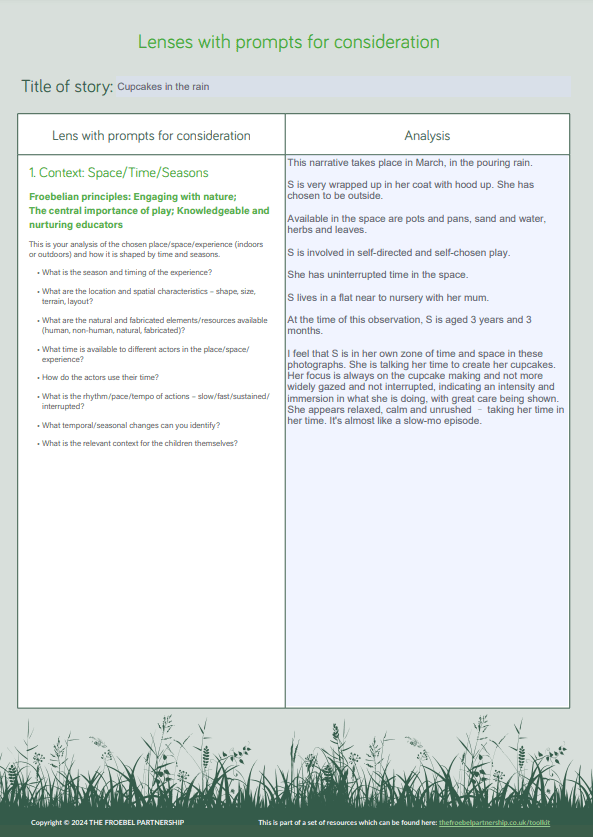The importance of context on children’s development, learning and transformations
The
examples given below show the different ways the Reflection with Guidance tool can be
used.
Some are
written stories with accompanying Reflection with Guidance templates completed
by a small group of educators.
Others are recordings of educators using the prompts on the Reflection with Guidance tool
to discuss a photo or a video or a written narrative observation (learning
story).
Other completed Reflection with Guidance templates show how educators have used them to reflect
on a video of children or some photos.
“The child should experience nature in all its aspects - form, energy, substance and colour.”
(Froebel in Lilley, page 148)
Exploring musical creativity in the mud kitchen
Exploring musical creativity in the mud kitchen
Watch a short video of a child playing the drums in the mud kitchen! Listen to educators reflecting on this video. Would you agree with their reflections? Does the context for this child’s development and learning echo the context provided in your own setting?
Splash, splash
Read about how E, a boy with autism, explores a puddle. You will see that he doesn’t need much in the way of resources but that the context and the presence of a trusted adult are significant to his development and learning.









